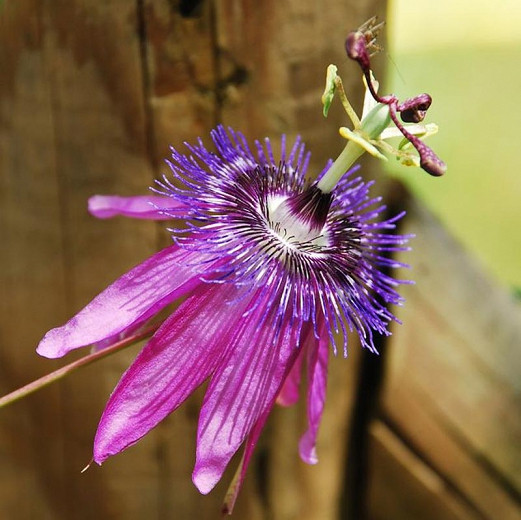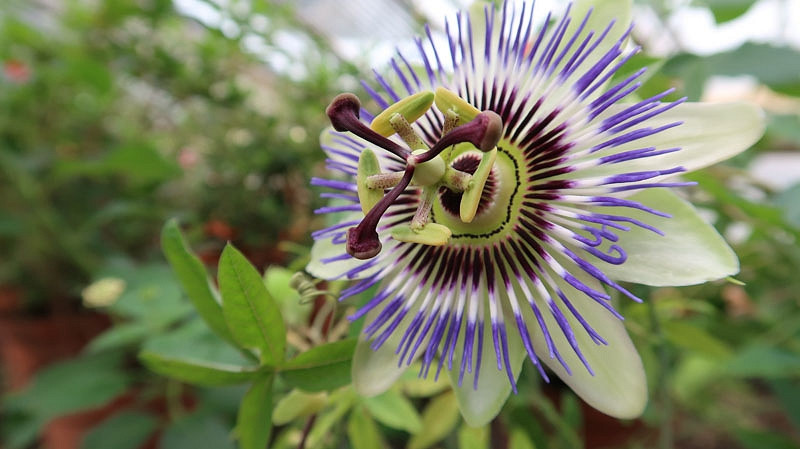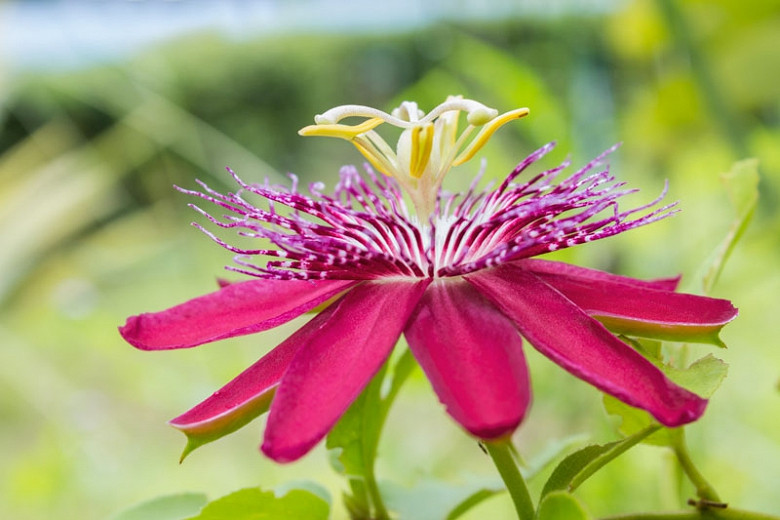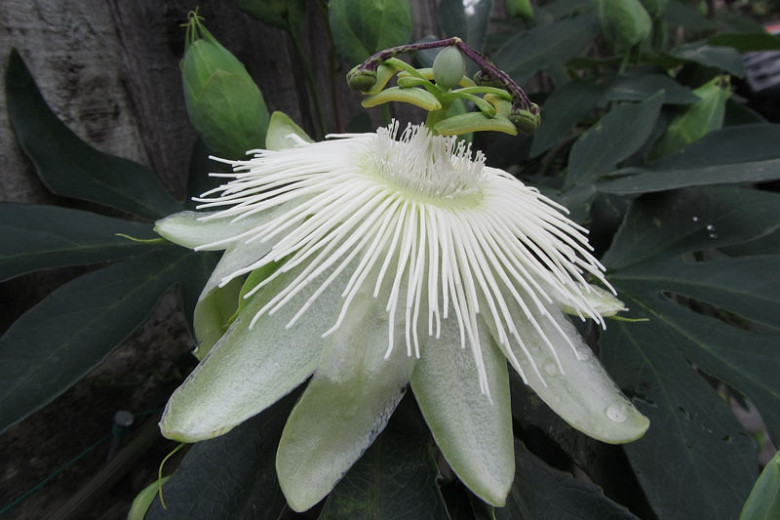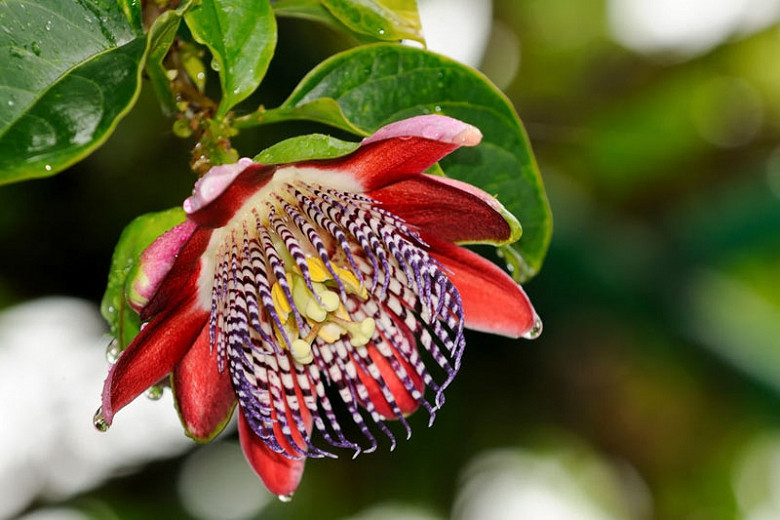Passiflora Amethyst (Passion Flower)
Adding an exotic touch to the garden, award-winner Passiflora 'Amethyst' is a vigorous evergreen climber with light purple flowers, 4 in. wide (10 cm), adorned with a ring of rich violet-purple pointed filaments surrounding the green fleshy reproductive structures. Very free flowering, a mature plant may bear over 60 flowers a day! Over time, the tepals gracefully become reflexed. The abundant blooms are followed by egg-size orange-yellow fruits from late summer through fall. The fruits are edible but not really tasty. The foliage consists of deep blue-green three-lobed leaves which create a perfect backdrop for the flowers. 'Amethyst' is a very old UK hybrid resulting from a cross between Passiflora kermesina and the very hardy Passiflora caerulea. It is often confused with US Passiflora 'Lavender Lady'.
- Winner of the prestigious Award of Garden Merit of the Royal Horticultural Society for its noteworthy qualities.
- Blooms intermittently throughout the year with a peak bloom season in spring and fall in warm weather areas, and late summer to early fall elsewhere.
- Thrives in full sun or part shade, in loose sandy or gravelly, moist, well-drained soils. Good drainage is essential. Go light on fertilizer and water deeply, but infrequently. Passion Flowers should be encouraged to reach deep into the earth for water. This prompts them to develop a powerful root system that will sustain them through droughts and freezes. Do not provide too much manure or compost or this will result in lush vegetative growth and poor flowering. Keep the soil on the dry side in the winter. Some drought tolerance once established.
- Easy to grow, this Passion vine can quickly grow up to 6-30 ft. long (3-9 m). Don't try to train your Passion Flower to be too neat and compact. The branches allowed to hang loose and droop a bit will be the ones most inclined to flower.
- Excellent choice for trellises, walls, fences, or arbors. Perfect in wall-side borders, city gardens, cottage gardens, Mediterranean gardens, and containers. This trouble-free climber clings with tendrils so won't damage brickwork or fences!
- Butterflies are extraordinarily fond of Passion Flowers.
- The terminal buds may be pinched out to encourage branching.
- Propagate by seed, semi-hardwood cuttings, or by layering in spring or fall.
- This vine blooms on new growth and should be pruned in late winter or early spring. No regular pruning needed. However, trimming may be required to keep them to the space available, removing as much from the longer shoots as necessary.
- Ingestion of some parts may cause severe discomfort
Requirements
| Hardiness | 10 – 11 |
|---|---|
| Heat Zones | 9 – 12 |
| Climate Zones | 14, 15, 16, 17, 18, 19, 20, 21, 22, 23, 24 |
| Plant Type | Climbers |
| Plant Family | Passiflora – Passion Flowers |
| Exposure | Full Sun, Partial Sun |
| Season of Interest | Spring (Mid,Late)Summer (Early,Mid,Late)Fall |
| Height | 6' – 30' (180cm – 9m) |
| Spread | 6' – 15' (180cm – 4.5m) |
| Water Needs | Average |
| Maintenance | Low, Average |
| Soil Type | Chalk, Clay, Loam, Sand |
| Soil pH | Acid, Alkaline, Neutral |
| Soil Drainage | Moist but Well-Drained |
| Characteristics | Plant of Merit, Showy, Evergreen, Fruit & Berries |
| Tolerance | Deer, Drought |
| Attracts | Butterflies |
| Garden Uses | Arbors, Pergolas, Trellises, Patio and Containers, Wall-Side Borders, Walls and Fences |
| Garden Styles | City and Courtyard, Informal and Cottage, Mediterranean Garden |
